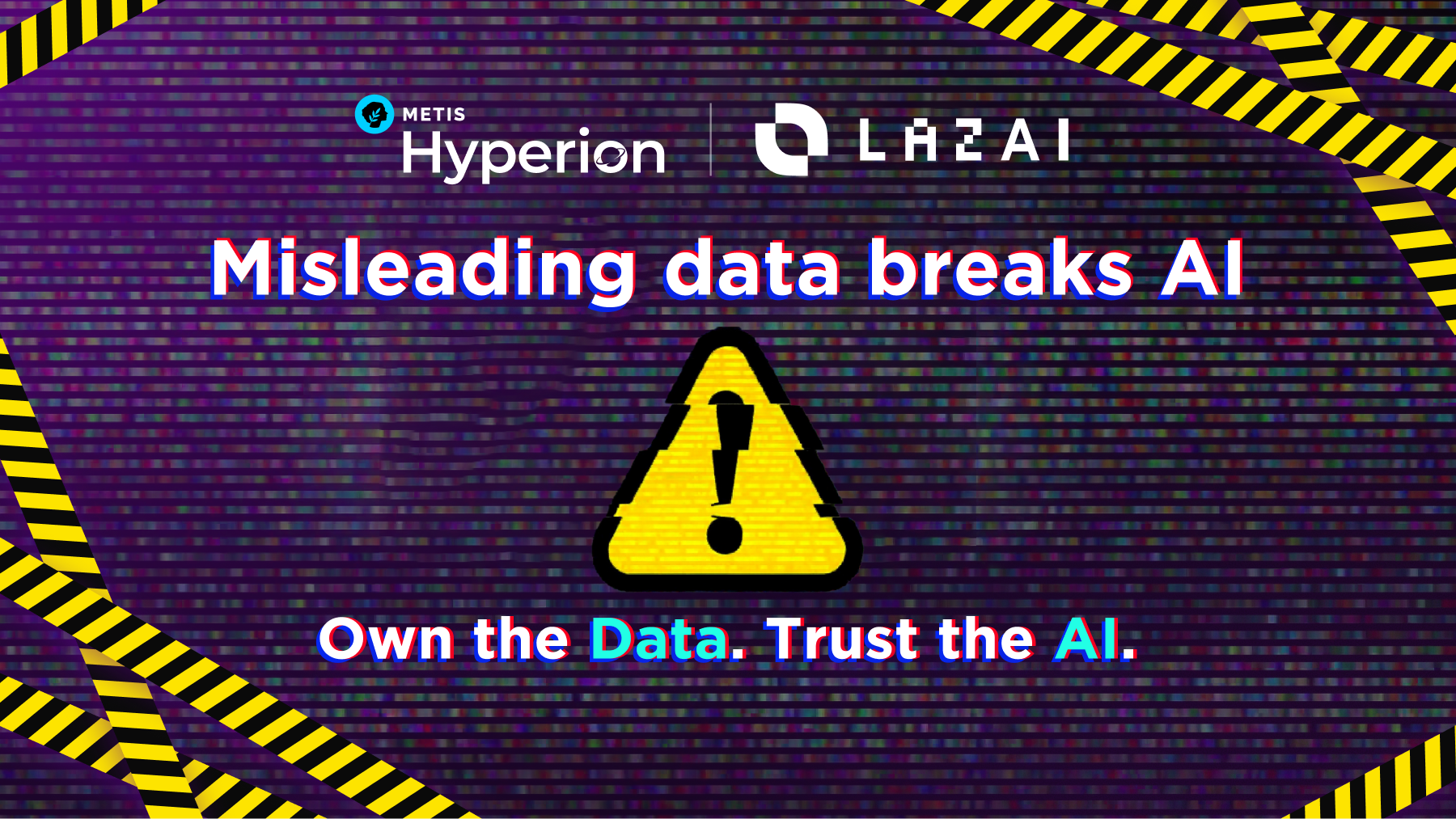





Artificial Intelligence is only as good as the data it learns from. When that data is wrong, outdated, or biased, AI doesn’t just make mistakes; it makes them confidently.
To explore how this plays out in real life, LazAI and Hyperion launched the “Misleading Data Breaks AI” Story Quest, a two-week community campaign that invited users to share their own encounters with bad data. From funny AI fails to serious financial losses, the stories poured in, revealing one truth: data you can’t trust leads to AI you can’t rely on.
The challenge was simple: tell a story where misleading or inaccurate data caused confusion, loss, or chaos, and explain what it taught you.
Participants posted their stories in the Metis Forum, showing how “bad data” shows up everywhere, from entertainment to finance, from smart home tech to hiring algorithms.
One user shared how their team tested a fitness app that confused “minutes per week” with “minutes per day,” leading to hilarious (and impossible) training plans, from 42 kilometers of running a day to 2 push-ups a week. It was a perfect example of how simple data mislabels can make even advanced AI look ridiculous.
How LazAI Helps: LazAI anchors datasets and validation proofs onchain, recording their source, balance, and verification steps. When a new dataset is added, validators confirm data integrity before it’s used for model training. This ensures AI decisions are based on complete and verified data, not faulty samples.
Another participant recalled a “smart fridge” incident that turned a family BBQ into chaos. The fridge’s AI mistook ghost pepper powder for paprika due to low-quality training images. The result? A recipe gone inferno.
How LazAI Helps: With onchain verifiability, data provenance becomes transparent, meaning AI models can confirm data origins and validation before applying them. No more mystery ingredients in the dataset.
One story took a more serious turn. A trader followed AI-generated signals that looked convincing but were built on flawed, unverified metrics. The result? Liquidation, and a reminder that “smart” doesn’t mean “trustworthy.”
How LazAI Helps: LazAI provides a framework where AI outputs can be anchored to verifiable data sources. When models are trained and validated transparently, users can see why a signal was generated, not just what it predicts.
A standout submission detailed how biased data in hiring, healthcare, and lending AI reinforces old prejudices instead of removing them. From the Amazon hiring scandal to racially skewed medical imaging, it showed that flawed data isn’t just a technical problem; it’s an ethical one.
How LazAI Helps: By combining verifiable data anchoring with decentralized validation, LazAI ensures datasets represent all user groups and remain tamper-proof. It moves AI from blind pattern-matching to transparent fairness.
One user described watching Grok, xAI’s assistant on X, deliver a polished but entirely wrong “fact-check,” and how quickly misinformation can spread when AI gets it wrong.
How LazAI Helps: LazAI enables proof-backed information retrieval. With verifiable records and cross-referenced data trails on Hyperion, confidence in AI-generated facts comes from validation, not assumption.
Every story, funny or painful, revealed the same truth: the future of AI depends on data we can trust.
That’s exactly what LazAI, the application layer on Hyperion (Metis’ high-performance AI Layer 2), was built to solve. LazAI ensures that every dataset, model, and output can be verified, audited, and owned by both developers and users.
It transforms AI from a black box into an open, transparent system where data integrity is baked in, not bolted on.
Next, the LazAI Explainer Challenge (Oct 6–20) invites builders, creators, and educators to craft content that helps others understand how LazAI works and why data verification matters. Join here.